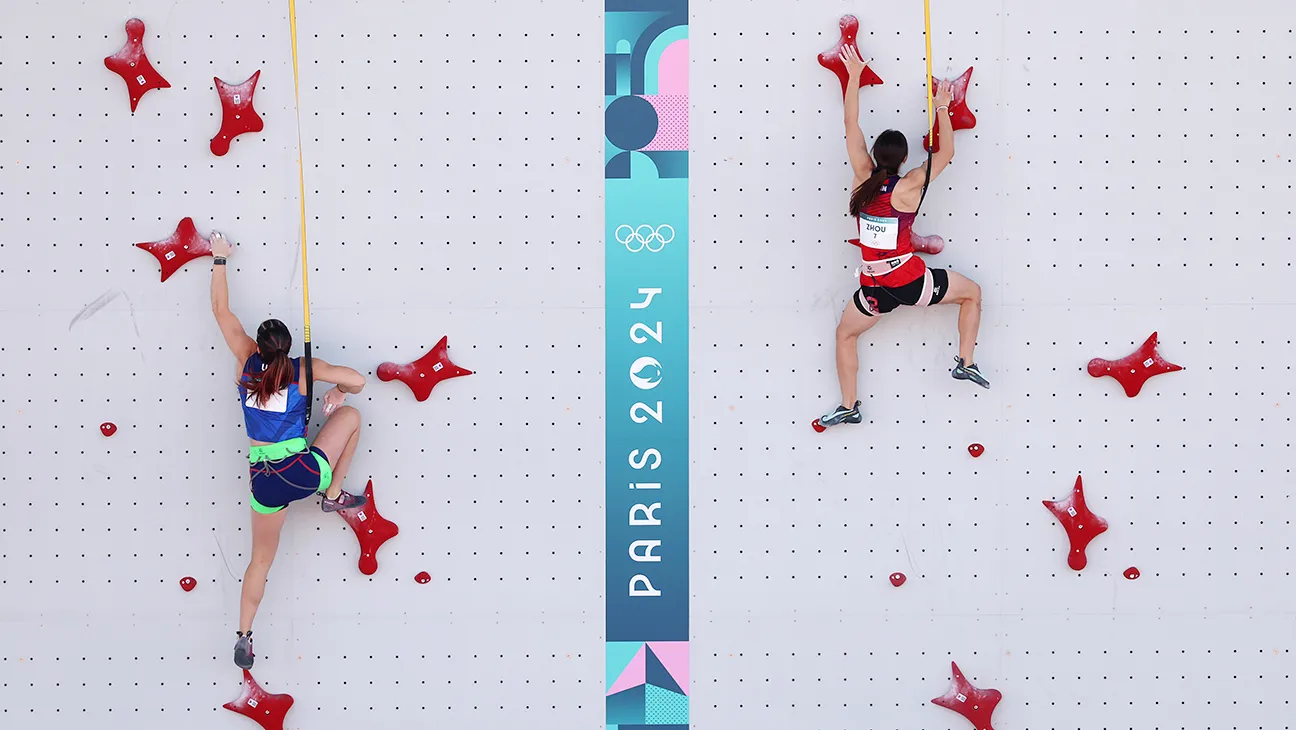Sport climbing made its historic Olympic debut at the Tokyo 2020 Games, introducing millions of viewers worldwide to one of the most exciting and dynamic sports. The Olympic format, known as sport climbing combined, features three distinct disciplines that test athletes’ versatility, strength, and mental fortitude. This comprehensive guide explores everything you need to know about sport climbing in the Olympics.
What is Sport Climbing Combined Olympics?
Sport climbing combined is the Olympic format that combines three climbing disciplines into a single competition. Athletes must compete in all three events, with their final ranking determined by multiplying their placement scores across the three disciplines. The climber with the lowest combined score wins the gold medal.
The three disciplines that make up the combined format are:
Speed climbing tests pure velocity as climbers race up a standardized 15-meter wall in the fastest time possible. The world record currently stands at under 5 seconds for men and under 7 seconds for women.
Bouldering challenges athletes to solve complex climbing problems on 4-meter walls without ropes. Climbers have limited attempts to reach the top of each boulder problem, testing their problem-solving skills and technique.
Lead climbing requires athletes to climb as high as possible on a wall over 15 meters tall within a set time limit. This discipline tests endurance, route-reading ability, and mental strength as climbers face increasingly difficult moves.
History of Sport Climbing in the Olympics
The International Olympic Committee officially included sport climbing in the Tokyo 2020 Olympics program in 2016. This decision marked a significant milestone for the climbing community, which had been advocating for Olympic inclusion for decades.
The debut Olympic competition took place in August 2021 at the Aomi Urban Sports Venue in Tokyo. Despite initial skepticism from some climbing purists about the combined format, the event proved to be a spectacular showcase of athletic talent and drew enormous global attention to the sport.
The success in Tokyo secured sport climbing’s place in future Olympic Games, with the sport confirmed for Paris 2024 and Los Angeles 2028.
How Olympic Sport Climbing Scoring Works
The combined format uses a unique multiplication scoring system that rewards consistency across all three disciplines. Here’s how it works:
Athletes compete in each of the three disciplines and receive a ranking (1st place, 2nd place, etc.) in each event. These three rankings are then multiplied together to create a final combined score. The athlete with the lowest combined score wins.
For example, if an athlete places 2nd in speed, 3rd in bouldering, and 1st in lead, their combined score would be 2 × 3 × 1 = 6. An athlete who places 1st, 4th, and 2nd would score 1 × 4 × 2 = 8, making the first athlete the winner despite not winning two of the three disciplines.
This scoring system emphasizes the importance of being well-rounded across all three climbing styles rather than specializing in just one discipline.
Notable Olympic Sport Climbing Champions
The inaugural Olympic sport climbing competition produced memorable performances and new stars:
Men’s Combined Champion: Alberto Ginés López of Spain became the first-ever Olympic sport climbing champion, showcasing remarkable consistency across all three disciplines.
Women’s Combined Champion: Janja Garnbret of Slovenia dominated the women’s competition, proving her status as one of the greatest climbers of all time.
These athletes, along with other Olympic medalists, have become ambassadors for the sport and helped inspire a new generation of climbers worldwide.
Training for Olympic Sport Climbing
Olympic sport climbing athletes must develop expertise across three very different disciplines, requiring diverse training approaches:
Speed Climbing Training focuses on explosive power, precise technique, and muscle memory. Athletes practice the exact same route repeatedly to optimize their movement efficiency and reaction time.
Bouldering Training emphasizes problem-solving skills, dynamic movements, and finger strength. Climbers work on powerful moves, coordination, and the ability to quickly read and adapt to new challenges.
Lead Climbing Training builds endurance, mental resilience, and route-reading skills. Athletes practice sustained climbing over longer periods and develop strategies for managing pump and fatigue.
Many Olympic climbers train 6-8 hours daily, combining specific climbing practice with strength training, flexibility work, and mental preparation.
Equipment and Safety in Olympic Sport Climbing
Olympic sport climbing uses specialized equipment designed for safety and performance:
Climbing Shoes provide precise foot placement and grip on small holds. Olympic athletes often use different shoe models optimized for each discipline.
Harnesses and Ropes are used in speed and lead climbing for safety. The rope systems are designed to catch falls instantly while allowing natural climbing movement.
Chalk helps maintain grip by absorbing moisture from hands. Athletes often develop personal chalk preferences and application techniques.
Holds and Wall Construction must meet strict Olympic standards for consistency and safety. The climbing walls are precisely engineered to provide fair and challenging competition conditions.
Impact of Olympics on Sport Climbing Growth
The inclusion of sport climbing in the Olympics has dramatically increased the sport’s global popularity and participation:
Youth Participation has surged worldwide, with climbing gyms reporting significant increases in young climbers taking up the sport.
Media Coverage has brought climbing to mainstream audiences, with Olympic broadcasts reaching hundreds of millions of viewers globally.
Infrastructure Development has accelerated, with more climbing gyms and outdoor climbing areas being developed to meet growing demand.
Sponsorship and Funding opportunities have expanded for athletes, enabling more climbers to pursue the sport professionally.
Future of Olympic Sport Climbing
Sport climbing continues to evolve as an Olympic sport. The Paris 2024 Olympics will feature some format changes, with speed climbing becoming a separate medal event while bouldering and lead climbing are combined into another medal event.
The sport’s inclusion in Los Angeles 2028 ensures continued Olympic presence, and discussions are ongoing about potential format refinements to better showcase each discipline’s unique characteristics.
The climbing community remains excited about the sport’s Olympic future and the opportunities it creates for athletes worldwide.
Getting Started in Sport Climbing
For those inspired by Olympic sport climbing, getting started is more accessible than ever:
Find a Local Climbing Gym to learn basic techniques and safety procedures in a controlled environment.
Take Beginner Classes offered by most climbing facilities to learn proper technique and safety protocols.
Try All Disciplines to discover your strengths and preferences across speed, bouldering, and lead climbing.
Join Climbing Communities to connect with other climbers and learn from experienced athletes.
Consider Coaching for more serious pursuit of the sport and competition preparation.
Conclusion
Sport climbing combined Olympics represents one of the most exciting additions to the Olympic program in recent years. The format’s unique challenges, combining speed, power, and endurance, create compelling competition that showcases the full spectrum of climbing abilities.
As the sport continues to grow and evolve within the Olympic framework, it offers incredible opportunities for athletes and inspiration for newcomers to discover the joy and challenge of climbing. Whether you’re a spectator enjoying the Olympic competition or someone considering taking up climbing yourself, sport climbing combined offers something truly special in the world of Olympic sports.
The future looks bright for Olympic sport climbing, with continued growth, evolving formats, and new generations of athletes pushing the boundaries of what’s possible on the wall.

